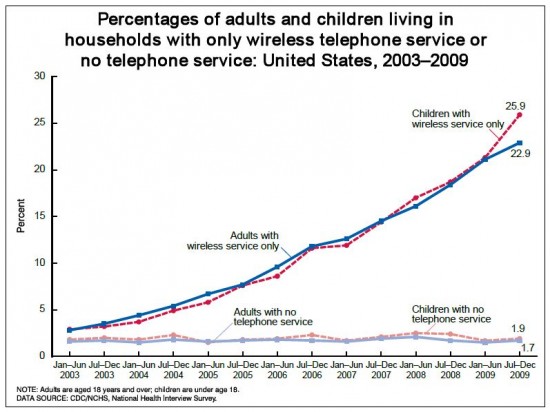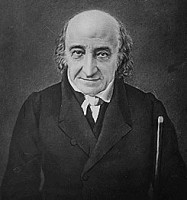 Google has just announced that it is ending web-only sales of its unsubsidized Nexus One smartphone. The company had hoped to created a very different kind of business model for mobile phone retailing, but it just didn’t work and so they are ending the experiment.
Google has just announced that it is ending web-only sales of its unsubsidized Nexus One smartphone. The company had hoped to created a very different kind of business model for mobile phone retailing, but it just didn’t work and so they are ending the experiment.
There are a couple of reasons that it probably didn’t work, but the one thing that just about everyone is pointing back to is the difficulty of acclimating Americans to the actual cost of an unsubsidized handset. Over at Ars Technica, Peter Bright points out:
A one-off payment of $529 is hard to stomach. In many countries, we’re not accustomed to paying so much for mobile phones, as normally their true cost is hidden—we pay less up front and commit to paying a monthly fee for 12-24 months. Only those brave souls who were willing to stump up for the early termination fee would get any idea of the true cost of their handset. In a world of subsidized handsets, then, the Nexus one felt very expensive. It’s true that SIM-only contracts are cheaper than with-handset ones, but the difference rarely feels significant enough to justify buying a full-price phone—much better to pay a little bit more each month and avoid the up-front cost. Even if you do the math and work out that the Google way is cheaper, there’s still the unpleasant prospect of spending so much at once.
And Kevin C. Tofel of GigaOm concludes:
Continue reading →
The Center for Disease Control and Prevention (CDC) has released it’s latest report on “Wireless Substitution: Early Release of Estimates From the National Health Interview Survey.” For many years, this CDC report has shown a steady rise in “cord-cutting” with a gradual rise in the number of wireless-only homes. But we’ve now reached an important milestone of sorts with fully one-quarter of all U.S. homes now in the wireless-only camp. According to CDC:
One of every four American homes (24.5%) had only wireless telephones (also known as cellular telephones, cell phones, or mobile phones) during the last half of 2009—an increase of 1.8 percentage points since the first half of 2009. In addition, one of every seven American homes (14.9%) had a landline yet received all or almost all calls on wireless telephones.
Pretty stunning when you think about the fact that just a decade ago few of us even carried phones around in our pockets or purses. Despite what all the worry-warts and wanna-be regulators in Washington say, this is one hell of a dynamic marketplace.

 Over the weekend, I published an op-ed in The Des Moines Register encouraging the FCC to heed the lessons of the first national broadband plan, the one Secretary of the Treasury Albert Gallatin sent to Congress in 1808.
Over the weekend, I published an op-ed in The Des Moines Register encouraging the FCC to heed the lessons of the first national broadband plan, the one Secretary of the Treasury Albert Gallatin sent to Congress in 1808.
Gallatin was a remarkable figure in the early history of the federal government, and his accomplishments include being the longest-serving Treasury secretary (1801-1812) to date. His report on the Subject of Public Roads and Canals, completed at the request of Congress, remains one of the seminal documents in the history of American infrastructure. It is a masterpiece of dispassionate policy-making and clear-headed writing.
Alas, the document is available nowhere online, and the only in-print copy I can find is published by the aptly-named Dodo Press. This is indeed unfortunate given the renewed interest in network infrastructure as a form of national technology. The NBP published in March by the FCC, despite its nearly 400 pages and thousands of footnotes, makes no reference to Gallatin or his plan. Continue reading →
 I have a long opinion piece on CNet today, arguing that much of the talk of “reclassifying” or “relabeling” broadband Internet access to bring it under the FCC’s regulatory authority is just that—talk.
I have a long opinion piece on CNet today, arguing that much of the talk of “reclassifying” or “relabeling” broadband Internet access to bring it under the FCC’s regulatory authority is just that—talk.
On April 6th, the D.C. Circuit Court of Appeals ruled definitively that the squishy doctrine of “ancillary jurisdiction” provides no authority for the FCC to impose its net neutrality rules on broadband Internet providers.
Law professors and paid advocates are doing a good job of convincing journalists who don’t understand the finer points of administrative law that all the FCC needs to undo that decision is the will to change the classification of broadband and…problem solved.
Not quite. Those who argue the FCC can simply waive a regulatory wand and give itself all the jurisdiction it needs under Title II of the Communications Act are engaging in serious wishful thinking, or worse.
Continue reading →
In the latest PFF TechCast, I discuss the issues considered in the second essay in our ongoing series, “The Wrong Way to Reinvent Media.” In this 6-minute podcast, PFF’s press director Mike Wendy chats with me about proposals to impose taxes on broadcast spectrum licenses to funnel money to public media or “public interest” content. In my paper and this podcast, I make the case again socially engineering media choices and outcomes through the tax code.
MP3 file: PFF TechCast #2 – Saving the Media Through Broadcast Spectrum Taxes (4/5/2010)
John Schwartz of The New York Times called me two weeks ago and asked for comment about a potential controversy involving mobile phone provider Sprint and the charitable organization Catholic Relief Services (CRS). The facts were pretty sketchy at the time, but Schwartz told me that CRS was accusing Sprint of blocking Mobile Commons, the company that connects CRS and 100 other nonprofit organizations with text messaging networks, from getting a short code to create a charitable mobile donation program in the wake of the Haiti earthquake. Here’s the basic background that appeared in Schwartz’s March 24th article, “Catholic Charity and Sprint Tangle Over Texting“:
[CRS] wanted to try a twist on the technology: when people sent a text message to donate, they got a reply offering to connect them via phone to the charity’s call center. The group hoped that the calls could build a stronger bond with donors, and garner larger contributions as well. But just three days into the effort after the Jan. 12 earthquake, the charity got word that Sprint Nextel was demanding that the “text-to-call” effort be shut down. The charity had 40 days to abandon the feature or lose access to millions of Sprint customers. Sprint’s original motivations are murky; it said that an intermediary company had failed to properly fill out a form to verify that it was dealing with a legitimate charity.
It didn’t take long for the regulatory activists at Free Press and Public Knowledge to pounce and claim the Federal Communications Commission (FCC) had to intervene to save our souls from the nefarious scum at Sprint. After all, you do know that Sprint hates Haitians, right? The company obviously wanted to see Haitians starve and not receive any support from charitable organizations.
No, seriously, come on! How asinine is this storyline?! Continue reading →
 Now that the broadband plan is out, and the FCC has its sights set on 500 MHz of broadcast spectrum, come listen to what it all means. In the latest episode of the Surprisingly Free Conversation podcast, Thomas Hazlett, Professor of Law & Economics and Director of the Information Economy Project at George Mason University School of Law, discusses the economics of spectrum. The discussion also turns to the history of spectrum regulation, ongoing inefficiencies in the current system, and suggestions for possible improvements.
Now that the broadband plan is out, and the FCC has its sights set on 500 MHz of broadcast spectrum, come listen to what it all means. In the latest episode of the Surprisingly Free Conversation podcast, Thomas Hazlett, Professor of Law & Economics and Director of the Information Economy Project at George Mason University School of Law, discusses the economics of spectrum. The discussion also turns to the history of spectrum regulation, ongoing inefficiencies in the current system, and suggestions for possible improvements.
Listen to other episodes and remember to subscribe to the podcast using RSS or iTunes.
Progress Snapshot 6.6, The Progress & Freedom Foundation (PDF)
Mobile broadband speeds (at the “core” of wireless networks) are about to skyrocket—and revolutionize what we can do on-the-go online (at the “edge”). Consider four recent stories:
- Networks: MobileCrunch notes that Verizon will begin offering 4G mobile broadband service (using Long Term Evolution or LTE) “in up to 60 markets by mid-2012″—at an estimated 5-12 Mbps down and 2-5 Mbps up, LTE would be faster than most wired broadband service.
- Devices: Sprint plans to launch its first 4G phone (using WiMax, a competing standard to LTE) this summer.
- Applications: Google has finally released Google Earth for the Nexus One smartphone on T-Mobile, the first to run Google’s Android 2.1 operating system.
- Content: In November, Google announced that YouTube would begin offering high-definition 1080p video, including on mobile devices.
While the Nexus One may be the first Android phone with a processor powerful enough to crunch the visual awesomeness that is Google Earth, such applications will still chug along on even the best of today’s 3G wireless networks. But combine the ongoing increases in mobile device processing power made possible by Moore’s Law with similar innovation in broadband infrastructure, and everything changes: You can run hugely data-intensive apps that require real-time streaming, from driving directions with all the rich imagery of Google Earth to mobile videoconferencing to virtual world experiences that rival today’s desktop versions to streaming 1080p high-definition video (3.7+ Mbps) to… well, if I knew, I’d be in Silicon Valley launching a next-gen mobile start-up!
This interconnection of infrastructure, devices and applications should remind us that broadband isn’t just about “big dumb pipes”—especially in the mobile environment, where bandwidth is far more scarce (even in 4G) due to spectrum constraints. Network congestion can spoil even the best devices on the best networks. Just ask users in New York City, where AT&T has apparently just stopped selling the iPhone online in order to try to relieve AT&T’s over-taxed network under the staggering bandwidth demands of Williamsburg hipsters, Latter-Day Beatniks from the Village, Chelsea boys, and Upper West Side Charlotte Yorks all streaming an infinite plethora of YouTube videos and so on. Continue reading →

Tim Wu: Not Looking Happy about Being So Wrong
Three years ago this month, Columbia University Law School professor Tim Wu released a controversial white paper in conjunction with the New America Foundation entitled, “Wireless Net Neutrality: Cellular Carterfone and Consumer Choice in Mobile Broadband.” It contained a litany of accusations regarding supposed corporate shenanigans in the mobile marketplace, including: intentional crippling of features and functionality; refusal to allow 3rd party attachments or intentional curtailment of a market for 3rd party application developers; and various concerns about “discrimination” of one sort or another.
Here at the TLF, we responded quite forcefully. I think every one of us piled on this study in one way or another. (ex: Hance, Jerry, James, Tim Lee, me x 2, + a podcast). I called his proposal “a declaration of surrender” since Prof. Wu was essential calling the game early and raising the white flag on mobile competition. Further, I argued he was essentially asking for “the forced commoditization of cellular networks” which “would necessitate at return to the rate-of-return regulatory methods of the past.” Others were a bit more kind to him, but we were all pretty skeptical of his gloomy claims. However, each of us here also argued that the wireless market (especially the applications side of the market) was still developing and that we’d have to check back in a few years to see how well the hands-off approach worked out.
Well, thankfully, we now know for certain that Tim Wu’s was much too lugubrious in his outlook and far too quick to call for regulatory intervention to solve a non-crisis. On the occasion of the 3rd anniversary of the release of Prof. Wu’s paper, CTIA-The Wireless Association filed a short paper with the FCC taking stock of just how far the mobile marketplace has come in just three short years. The results are really quite remarkable, as CTIA’s letter notes: Continue reading →

Worth It?
OK, time for a quick rant. What is all this confusion and consternation over early termination fees (ETFs) for high-end smartphones? I mean, seriously, how hard is this process to understand? The FCC has worked itself into a lather over this and is bombarding wireless operators and Google with hate mail letters of inquiry harassing asking them about their ETF policies. I just don’t get it. Let’s review some simple realities:
- Smartphones — especially high-end devices like the iPhone, the Droid, and the Nexus One — are basically mobile mini computers.
- Mini mobile computers do not grow on trees; someone has to make them and sell them at a profit or else no one would offer them to begin with.
- But the people who make and sell these devices (and wireless service for these devices) want to ensure rapid, widespread distribution to win over customers and recoup their costs.
- So, they offer a classic business inducement — an upfront subsidy for the product in exchange for monthly payments to amortize the upfront “loan” they have given the customer;
- AND THEN THEY FORM A CONTRACT WITH THE BUYER TO MAKE THE DEAL WORK. And that contract obligates both sides to live up to their end of the deal.
- Hey… did I mention they need to form a contract to make the deal worth it? OK, good, wanted to make sure I got that point across.
- Then they give you a nice shiny new mobile mini-computer that for some reason we Americans still insist on calling a cell phone.
- Then you start paying off the “loan” they’ve given you for that device over the span of the service contract. This is called “prorating.”
- But, if you default on that loan by breaking your contract, you’ll be hit with a penalty — an early termination fee — since it would leave the carrier without a way to recoup the cost of that shiny new mobile mini-computer that they handed you on the cheap when you just absolutely had to have the hot new toy in town.
Is this process really all that complicated? And why is it so controversial? It certainly shouldn’t be. Prorating happens every day in countless ways in a capitalist economy. And yet in the apparent techno-entitlement society we live in these days, some people seem to think there’s something scandalous about this process when it happens with our beloved mobile devices. In reality, the smartphone subsidy and prorated contract system is really one of the great pro-consumer accomplishments of our time. Continue reading →
 Google has just announced that it is ending web-only sales of its unsubsidized Nexus One smartphone. The company had hoped to created a very different kind of business model for mobile phone retailing, but it just didn’t work and so they are ending the experiment.
Google has just announced that it is ending web-only sales of its unsubsidized Nexus One smartphone. The company had hoped to created a very different kind of business model for mobile phone retailing, but it just didn’t work and so they are ending the experiment.






 The Technology Liberation Front is the tech policy blog dedicated to keeping politicians' hands off the 'net and everything else related to technology.
The Technology Liberation Front is the tech policy blog dedicated to keeping politicians' hands off the 'net and everything else related to technology.